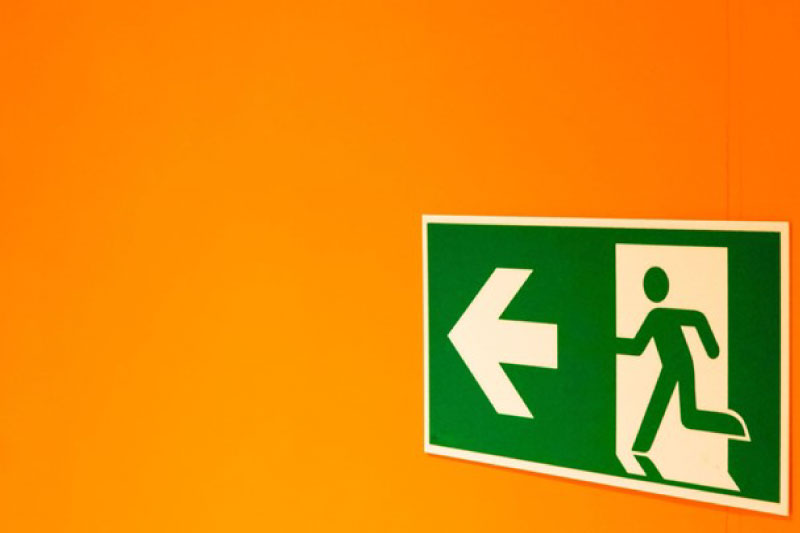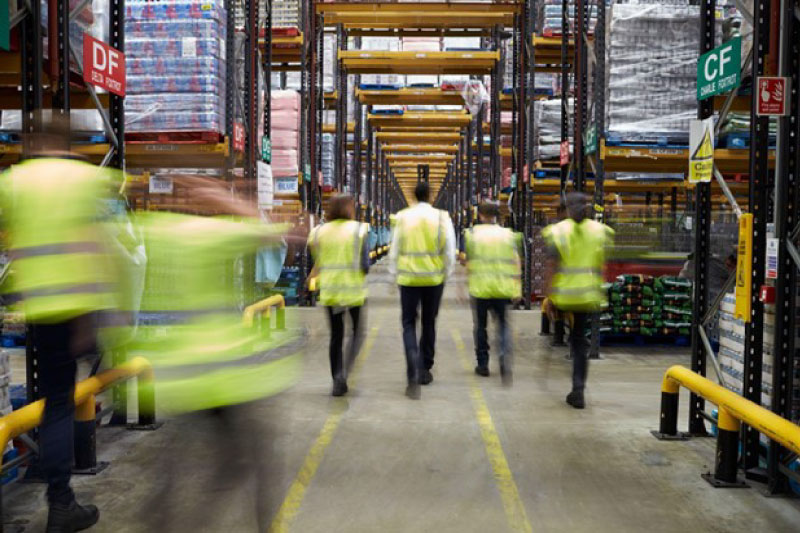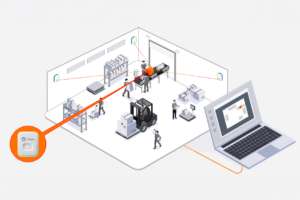Table of Contents
In times of crisis, every second counts. That’s why the advent of Real-Time Location Systems (RTLS) has been a game-changer for emergency mustering. Backed by the potent capabilities of the Internet of Things (IoT), these innovative systems are redefining the roadmap for emergency handling, ensuring rapid and well-coordinated responses in times of crisis.
In this blog, we’ll dig into the realm of RTLS, uncover its features, and see its profound influence on the world of emergency management.
Understanding the Role of Emergency Mustering in Diverse Industries
From the hum of factories to the hive of office buildings, the hustle of hospitals to the buzz of construction sites – emergencies can surface anywhere, anytime. These unexpected events can put employees, visitors, and patients at risk.
At such times, it’s vital to navigate safety, quickly track everyone involved, and ensure their safe evacuation or transfer. Traditional emergency mustering methods, like roll call and paper-based systems, have served us well but often take time and can be prone to errors. This is where RTLS technology steps up and demonstrates its true potential.
The Power of RTLS in Enhancing Emergency Mustering
RTLS provides an automated and real-time solution to emergency mustering, enabling organizations to quickly locate and track individuals during critical situations. By integrating IoT technologies, RTLS systems can observe personnel movement, providing accurate data on their locations, which in turn elevates employee safety.
Incorporating RTLS doesn’t just fast-track the mustering process, it boosts the overall safety and effectiveness of emergency response strategies. In fields where every second counts, RTLS isn’t just an advantageous tool – it’s a vital element in life safety.

How RTLS Works in Emergency Mustering
RTLS brings together various tracking technologies such as RFID (Radio Frequency Identification) and Bluetooth to deliver live updates on individuals’ location and status during emergencies.
Imagine a network of tags or badges sported by staff members and receivers cleverly distributed throughout a facility. The tags, like a lighthouse in the night, emit signals picked up by receivers, effectively mapping the movements of individuals in real time.
RFID tags, frequently the choice for RTLS systems, are compact, battery-powered gadgets that can attach to employee badges or be worn as wristbands. Like personal radio stations, they broadcast unique identification signals picked up by RFID readers spread across the facility. These readers act as relay stations, transmitting the gathered data to a central server. The server then processes and displays this information on an intuitive interface. This real-time data stream allows emergency responders to swiftly locate individuals, check their status, and act accordingly.
Bluetooth technology is also utilized in RTLS systems, particularly in environments where RFID may not be suitable or cost-effective, or where there may be no cellular or Wi-Fi connectivity. Bluetooth beacons are placed throughout the facility and evacuation site, and individuals carry smartphones or devices capable of detecting the beacon signals. The system then tracks the movement of these devices and provides real-time location information.
Bluetooth-based RTLS solutions are often more versatile and can seamlessly integrate with existing infrastructure, making them a favored choice for many organizations to navigate safety in case of workplace emergencies.
Benefits of Using RTLS in Emergency Mustering
Implementing RTLS technology as an emergency mustering solution offers a wide range of benefits for organizations across different industries.
Ensuring Faster Evacuation by Accurate Accounting
One of the key advantages of having an RTLS emergency mustering system is the ability to quickly and accurately account for personnel during emergencies. With real-time location information, emergency responders can efficiently locate individuals even in remote locations, ensuring that no one is left behind or unaccounted for. This not only improves the safety of employees but also reduces response times, enabling faster emergency evacuations or relocation during emergency situations.
Making Informed Decisions
RTLS also enhances overall situational awareness and decision-making during emergencies. By having access to real-time data on the location and status of individuals, emergency management teams can make informed decisions about resource allocation, emergency evacuation sites, and the deployment of emergency personnel.
This real-time visibility enables organizations to optimize their emergency response efforts, potentially minimizing casualties and property damage. The safety officers can even identify the last scanned location of missing persons from the first responders.
Reporting and Analytics at Your Fingertips
Another key perk of RTLS as an emergency mustering solution is its ability to generate in-depth reports and analytics. The system logs and stores data on personnel movement, response times, last recorded locations, and evacuation patterns, among other pertinent information.
These reports prove invaluable for post-incident analysis, enabling organizations to pinpoint areas for improvement and review their emergency response strategies while ensuring safe employee evacuation. By scrutinizing the data collected by the RTLS system, health and safety officers can continuously boost their emergency readiness and response capabilities.

Implementing RTLS: Steps and Best Practices
Implementing an RTLS solution for emergency mustering requires careful planning and execution. Here are the steps and a few best practices you can consider:
- Assess the Facility
Begin by conducting an in-depth assessment of the facility to understand where the RTLS emergency mustering system will be implemented. Factors like the size of the facility, the number of employees, and the building’s layout are important considerations.
- Define Muster Points
Identify the muster points or the safe zones within the facility where individuals will assemble during emergencies. For larger workplaces, multiple evacuation sites might be required. A muster point should be strategically located and easily accessible to ensure a smooth and efficient mustering process.
- Choose the Right Technology
Choose the tracking technology that suits your organization’s needs. Aspects such as the facility’s size, the required level of accuracy, and the available budget should guide this decision.
- Deploy the Infrastructure
Install necessary infrastructure, like receivers or readers, across the facility. Position them strategically for maximum coverage and to minimize blind spots.
- Roll Out Tags or Badges
Distribute the RFID tags or Bluetooth devices to personnel. Educate employees on the importance of wearing the tags or devices at all times and provide instructions on how to use them effectively.
- Practice Makes Perfect
Conduct training sessions and safety drills to familiarize employees with the RTLS system and evacuation procedures. Regular evacuation drills and awareness of emergency plans will ensure everyone understands their roles to navigate safety during emergencies.
- Test and Optimize
Keep testing the RTLS system to ensure its accuracy and reliability. Make necessary adjustments based on the feedback and data collected during testing.
- Monitor and Maintain
Regularly monitor the performance of the RTLS system and conduct maintenance as needed. Keep track of system updates and advancements to ensure the system remains effective and up to date.

Challenges and Considerations When Adopting RTLS for Emergency Mustering
While RTLS technology offers significant benefits for emergency mustering, there are also challenges and considerations to keep in mind during the adoption process. One common challenge is ensuring tag or device compliance among employees.
It is necessary to keep the essential emergency personnel prepared and educate them on the importance of wearing the tags or devices at all times and the role they play in ensuring their safety during emergencies. Addressing any concerns or resistance to adopting this technology can help ensure successful implementation.
Another consideration is the cost of implementing an RTLS system. The initial investment may include infrastructure setup, tag or device procurement, and system integration. Organizations need to carefully evaluate the cost-benefit ratio and consider the long-term advantages of implementing an RTLS solution for emergency mustering.
In some cases, the potential cost savings from improved emergency response and reduced mustering times can outweigh the initial investment.
Data security and privacy are also important considerations when adopting RTLS technology. The system collects and stores sensitive information about individuals’ movements and locations, which must be protected from unauthorized access. Organizations should implement appropriate security measures, such as encryption and access controls, to safeguard this data and ensure compliance with relevant privacy regulations.
Future Trends and Advancements in RTLS or Emergency Mustering
As technology continues to advance, RTLS for emergency mustering has some exciting trends on the horizon. One trend is the integration of RTLS with other emergency management systems, such as fire alarms or video surveillance.
This integration allows for a more comprehensive and automated emergency response, where the RTLS system can trigger alarms or provide real-time location information to other systems, enhancing overall situational awareness.
We’re also seeing a surge in advancements in tag or device technology, with more compact, lightweight tags with extended battery life in the pipeline. These developments are set to boost adoption rates and ensure compliance.
Artificial intelligence (AI) and machine learning (ML) are also expected to play a significant role in the future of RTLS for emergency mustering. These technologies can analyze real-time data collected by the RTLS system and provide predictive insights, such as identifying potential bottlenecks or optimizing emergencies. By leveraging AI and ML, organizations can enhance their emergency preparedness and response capabilities, potentially saving more lives.
Final Thoughts
RTLS powered by IoT has revolutionized emergency mustering, providing organizations with the tools they need to navigate crises swiftly and efficiently. By leveraging advanced tracking technologies, such as RFID and Bluetooth, RTLS enables real-time information on the location and status of individuals during emergencies.
In a world where emergencies can strike at any moment, RTLS technology provides invaluable peace of mind. Swift and efficient emergency mustering can make all the difference in saving lives and minimizing damage. For this, look no further than Litum RTLS solutions.
With Litum’s emergency mustering solutions, you can bid farewell to complex compliance procedures and hours of implementation and learning. Access the straightforward interface of emergency mustering through a mobile or tablet, negating the need for special hardware.
Furthermore, with precise and current mustering control, long-range, wide-coverage, sleek tags, and cloud-based services, you can ensure continuous operations and enhanced safety at the workplace. So, navigate your present better with Litum’s RTLS solutions and software today and get a free assessment to get started.




